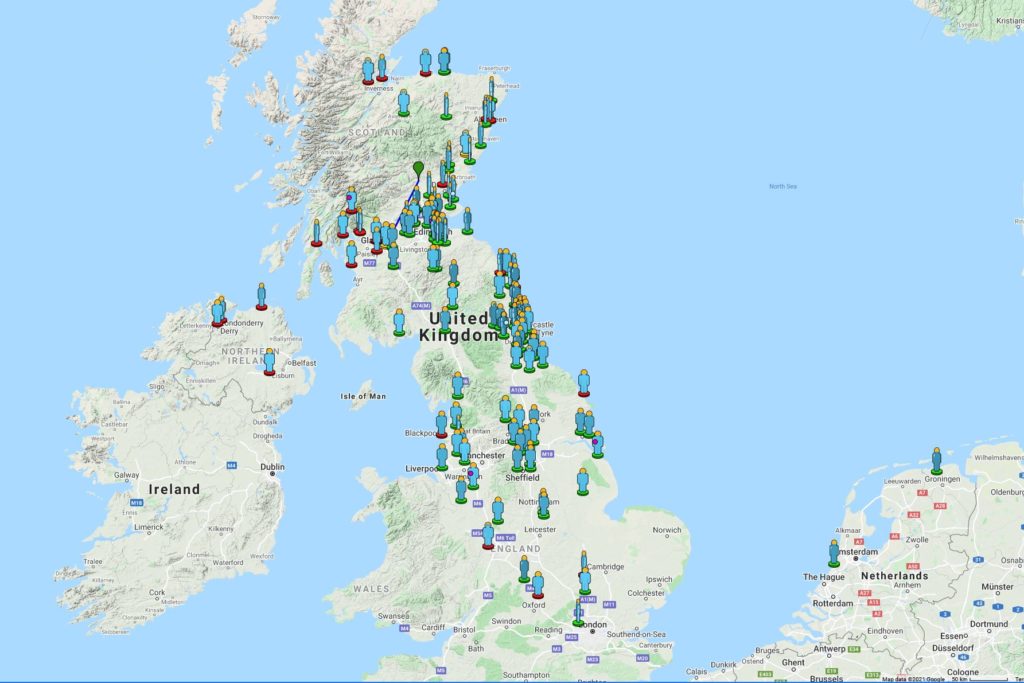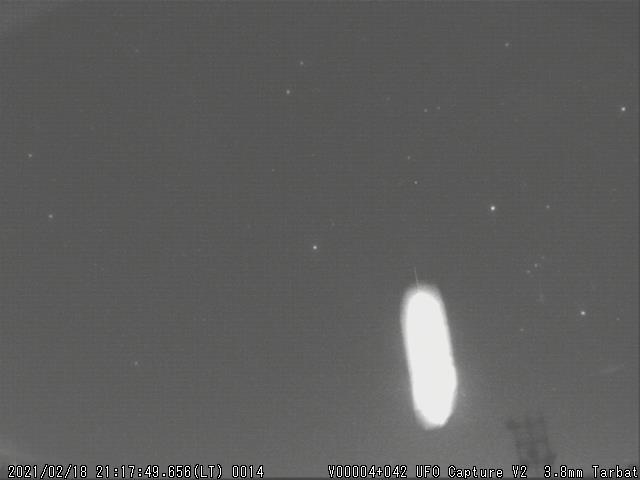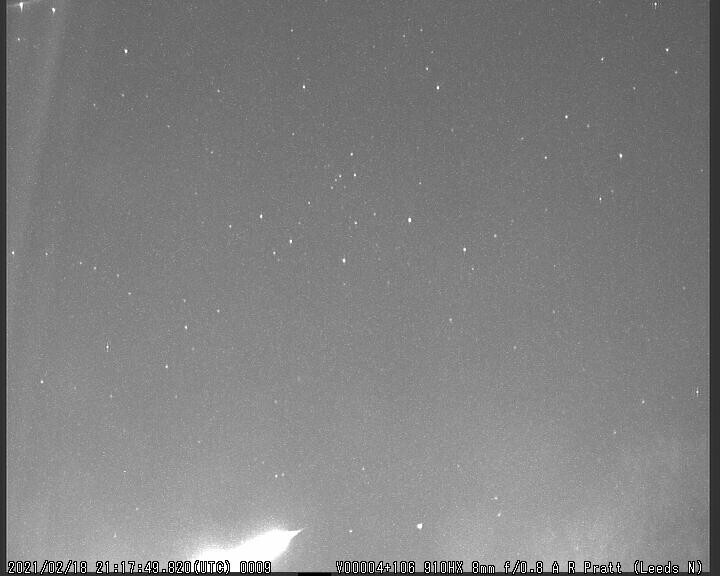Two events, two origins. On February 18th evening, a very bright fireball lit up Scottish skies. Two night before, on February 16th morning, another bright event was spotted and filmed from Southern Spain. The two look like meteors. In the end, the first was natural, the second was artificial and man-made!
On February 18th 2021, at 21h17 UT, a very bright event was reported by nearly 140 visual witnesses in United Kingdom and the Netherlands: this fireball was a natural meteor associated to an interplanetary space rock entering the atmosphere at high speed.

It was captured cameras stations of NEMETODE (Network for Meteor Triangulation and Orbit Determination) team. According to their provisory results, mainly based on two videos captured from Leeds and Tabatness, the sporadic meteor flew over Scotland during more than 5 seconds. It started being visible above the Grampian mountains, and it did go South with an approximate azimuth of 190° to end its trajectory slightly North of Glasgow.


From trajectory results, this event was linked to a meteoroid coming from the asteroidal belt between Mars and Jupiter. Which is not the case with the event that occurred on early morning over Spain! On February 16th 2021, at 06h57 UT, cameras from SPMN (Spanish Photographic Meteor Network) captured a very bright event, which strangely looks like the previous one, but much slower in apparent and real speed. And it was! This bright phenomenon was actually linked to Falcon 9 rocket stage that was launched 2 hours earlier (on Feb 16, 04h59 UT) from Cape Canaveral, to put 60 Starlink satellites into orbit.




 You saw something bright and fast? Like a huge shooting star? Report it: it may be a fireball.
You saw something bright and fast? Like a huge shooting star? Report it: it may be a fireball.  You counted meteors last night? Share your results with us!
You counted meteors last night? Share your results with us!  You took a photo of a meteor or fireball? You have a screenshot of your cam? Share it with us!
You took a photo of a meteor or fireball? You have a screenshot of your cam? Share it with us!  You caught a meteor or fireball on video? Share your video with us!
You caught a meteor or fireball on video? Share your video with us!
One comment
I wonder how was it possible that the faint and quickly moving light of the Falcon 9 stage had an aureole while the stars around it had nothing like that? My guess: probably that was not an aureole caused by the clouds but rather some fuel remnant or exhaust.
Aureoles are a lot smaller, compared to the light source, the one around the Falcon stage would be too big even to the Moon.